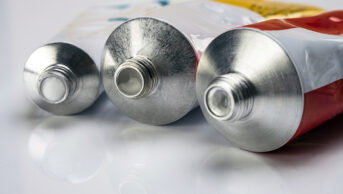
Image Point Fr / Shutterstock.com
A child is subject to a medication error every eight minutes in the United States, according to research that analysed calls to national poison hotlines.
A study found that more than 63,000 incidents of out-of-hospital medication errors occurred in children under the age of six in the United States each year from 2002 through to 2012. The most common mistakes occurred in homes and schools.
The research, conducted by Nationwide Children’s Hospital (NCH), in Columbus, Ohio, found that analgesics were the most commonly involved in medication errors (25.2%) followed by cough and cold preparations (24.6%).
The study is published in Pediatrics
[1]
by the Center for Injury Research and Policy (CIRP) and the Central Ohio Poison Center, both of which are part of NCH. The National Poison Data System, which collects information from the 55 poison centres in the United States, provided the data, involving 696,937 children aged under six years.
The authors said double dosing and mis-measuring were major culprits in such incidences.
“The numbers we report still underestimate the true magnitude of these incidents, since these are just cases reported to national poison centers,” says Huiyun Xiang director of the Center for Pediatric Trauma Research at NCH, and senior author of the study. The average annual rate of medication errors was 26.42 per 10,000 population.
The youngest children appeared to be most affected. In children aged under one year, 39 out of every 10,000 in that age group received both prescription and over-the-counter medication incorrectly, usually given by a parent or caregiver. In one-year-olds, it was 33 out of 10,000. In two-year-olds, three-year-olds, four-year-olds and five-year-olds, it was 28, 22, 19 and 15, respectively, per 10,000.
“Mislabelling was not the issue in these errors,” says Henry Spiller, director of the Central Ohio Poison Center, and co-author of the study. “The real culprits tend to be double-dosing and giving wrong doses, which happens mainly with new parents and their very young children.”
Spiller, an assistant professor in the department of paediatrics at the College of Medicine at Ohio State University, says often parents with more than one sick child accidently mix up the children’s medications. Miscommunication also plays a role, especially where there are multiple caregivers, including childcare workers, grandparents and babysitters. “Sometimes a father will administer the medication at bedtime and, because the mother doesn’t know, she gives a second dose,” he says.
Spiller believes one of the big challenges is managing medication-measurement errors. “Typically companies use measuring devices that can be used for several products, which means there are different lines representing different liquid measurements,” he says. “Ideally, each product would come with its own customized measuring device that has one line representing the correct dosage, which could help reduce errors.”
The study also revealed that the peak months of the year for these types of errors to occur are December, January and February, when cases of colds and influenza are most prevalent. “Although dosage instructions are clear on the label, pharmacies may help reduce mistakes by reminding customers to focus on the correct-dosage option displayed on the measuring device and avoid distractions when administering the drugs.”
References
[1] Smith MD, Spiller HA, Casavant MJ et al. Out-of-Hospital Medication Errors Among Young Children in the United States, 2002–2012. Pediatrics 2014. doi: 10.1542/peds.2014-0309 (accessed 20 October 2014).


